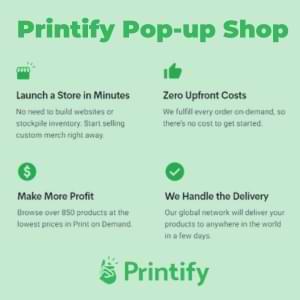Are you aware that approximately 20% of new businesses fail during the first two years of being open, 45% during the first five years, and 65% during the first 10 years. Similarly, the Small Business Administration reports that only about half of small businesses survive past the five-year mark, ranging from 45.4% to 51% depending on the year the business was started. The percentage of businesses that fail increases as the years go by, with businesses being most likely to fail in their first three years of operation.
These alarming statistics highlight the importance of having a solid marketing plan in place to ensure your business is not one of those that fail.
A marketing plan acts as a roadmap for your business, outlining key strategies and tactics to help you reach your goals and objectives.
As a small business owner, it can be daunting to create an effective marketing plan from scratch. That’s why we’ve created this sample marketing plan template for small businesses like yours.
In this article, we’ll guide you through the essential components of a successful marketing plan, including market and competitive analysis, setting goals and objectives, positioning your brand, developing a targeted marketing strategy, implementing tactics to reach your target audience, budgeting for success, and evaluating the effectiveness of your efforts.
By following this template and tailoring it to fit the unique needs of your business, you can increase your chances of success and achieve long-term growth.
Business Overview
Let’s dive into the foundation of your company — an overview that’ll set the stage for success. As a small business owner, you understand that having a solid business plan is crucial to your success. A marketing plan template is an essential component of your overall business plan and can help guide you in achieving your goals.
An example of a marketing plan typically includes an analysis of your target market, competition, and unique selling proposition. This information will be used to develop strategies that address how you’ll reach and engage customers.
The ultimate goal is to increase sales and revenue while building customer loyalty.
Your business overview should provide insight into what sets you apart from competitors and why customers should choose your products or services over others in the market. By taking the time to develop a comprehensive marketing plan for small businesses, you’ll have a roadmap for success that guides everything from product development to advertising campaigns.
Overall, this critical step will help ensure long-term growth and profitability for your small business.
Market Analysis
The analysis section is where you get to dive deep into understanding your customer base and discovering new opportunities for growth. It’s a goldmine of information waiting to be uncovered!
As business owners, it’s crucial to conduct a thorough market analysis before creating a marketing plan template or small business marketing plan. This step helps you identify the needs, wants, and pain points of your target audience so that you can develop effective marketing strategies.
To conduct a market analysis, start by researching your industry and competitors. Identify their strengths, weaknesses, opportunities, and threats (SWOT analysis). This will help you understand how you can differentiate yourself from others in the market.
Additionally, gather data about your customers’ demographics, preferences, habits, and buying behaviors. Use surveys or questionnaires to collect this information directly from your target audience.
Once you have all this data at hand, use it to create buyer personas – fictional characters that represent your ideal customers. These personas will help guide your marketing strategies by giving you insights into what motivates them to buy from you and how they prefer to be marketed to.
By conducting a thorough market analysis using these steps outlined above in combination with other helpful tips we’ve provided along the way in this sample marketing plan template for small business owners like yourself – your resulting marketing strategy should be much more effective!
Competitive Analysis
Now it’s time for you to discover the strengths and weaknesses of your competitors, uncover untapped market opportunities, and gain a competitive edge in your industry with a thorough analysis of the competition.
A competitive analysis is essential in developing a small business marketing plan template that can help you identify potential threats and opportunities in the marketplace. With this information, you can create an effective marketing strategy template that will allow you to stay ahead of the game.
To conduct a comprehensive competitive analysis, start by identifying your key competitors and gathering relevant information about them such as their products or services, pricing strategies, target audience, distribution channels, advertising tactics, and customer reviews. This will help you understand how they are positioning themselves in the market and what makes them successful.
Analyzing their strengths and weaknesses can provide insights into ways to improve your own business development efforts.
Once you have completed your competitive analysis, use this information to formulate targeted marketing tactics that differentiate yourself from your competitors while addressing customer needs. By leveraging these insights into actionable steps that align with your overall marketing strategy template, you can develop campaigns that resonate with customers on a deeper level while also effectively competing against others in your industry.
Goals and Objectives
Context:
As a small business owner, you’re ready to set your sights on achieving success and defining the goals and objectives that will guide your marketing strategy toward growth and profitability. It’s important to have a clear understanding of what you want to achieve with your marketing efforts. This is where setting SMART goals comes in handy — Specific, Measurable, Achievable, Relevant, and Time-bound.
Input:
Start by identifying what products and services you want to promote through your marketing plan template. Then determine who your target audience is and how you can reach them effectively.
Once you have a clear picture of these elements, you can start setting specific goals for your personalized marketing plan. Your goals should be based on metrics that are relevant to your business such as website traffic, lead generation, customer acquisition costs, or revenue generated from new customers.
By having measurable goals in place, you’ll be able to track the success of your marketing efforts over time and adjust accordingly.
In summary, defining clear goals and objectives is essential for any small business owner looking to create an effective marketing plan template. By taking the time to identify what products or services you want to promote and who your target audience is, along with setting SMART goals that are measurable and achievable, you will be well on your way towards building a successful personalized marketing plan that drives growth and profitability for years to come.
Command:
Adjust the paragraph structure in the Input to logically group complete sentences on their own lines, with a double new line after. Use contractions.
Output:
Start by identifying what products and services you want to promote through your marketing plan template. Then determine who your target audience is and how you can reach them effectively.
Once you have a clear picture of these elements, you can start setting specific goals for your personalized marketing plan. Your goals should be based on metrics that are relevant to your business such as website traffic, lead generation, customer acquisition costs, or revenue generated from new customers.
By having measurable goals in place, you’ll be able to track the success of your marketing efforts over time and adjust accordingly.
In summary, defining clear goals and objectives is essential for any small business owner. By taking the time to identify what products or services you want to promote and who your target audience is, along with setting SMART goals that are measurable and achievable, you’ll be well on your way toward building a successful personalized marketing plan that drives growth and profitability for years to come.
Positioning
To effectively position your brand in the market, visualize how you want your target audience to perceive your products and services. This is an important step in developing a successful marketing plan template for small business.
Consider what makes your product or service unique, and how it stands out from competitors. Determine what benefits you offer that others do not, and use this information to create a positioning statement that clearly communicates these advantages.
When creating a positioning statement for your marketing plan, keep in mind the following three key points:
- Identify your target audience: Who are you trying to reach with your message? What are their needs and desires? Understanding your audience will help you craft messaging that speaks directly to them.
- Highlight your unique selling proposition (USP): What sets you apart from competitors? Why should customers choose your product or service over others? Your USP should be clear and concise, providing a compelling reason for consumers to choose you.
- Develop a consistent brand message: Once you have identified your target audience and USP, ensure that all of your marketing efforts align with these factors. Consistency is key when it comes to building brand recognition and establishing trust with potential customers.
By taking the time to develop a strong positioning strategy as part of your business marketing plan, you can set yourself up for success in the competitive world of small business. Remember to keep it simple, clear, and focused on what makes your product or service stand out from the crowd.
Marketing Strategy
Ready to take your brand to the next level? Let’s dive into the Marketing Strategy section and discover how you can effectively promote your unique product or service to your target audience.
The marketing strategy is a vital component of any marketing plan, as it outlines the specific tactics and approaches that’ll be used to reach and engage potential customers. By creating a comprehensive marketing strategy, you can ensure that you’re maximizing your resources and targeting the right audiences.
To create a successful marketing plan template for small business, it’s important to begin by identifying your target market. This includes analyzing consumer demographics, psychographics, buying behavior, and other relevant factors.
Once you have a clear understanding of who your ideal customer is and what they’re looking for, you can then develop strategies for reaching them through various channels such as social media advertising, email campaigns, content marketing, and more.
Another key aspect of developing an effective marketing strategy is setting measurable goals. These goals should be specific, achievable targets that align with your overall business objectives.
For example, if one of your business goals is to increase revenue by 10% within the next year, then you might set a corresponding goal of increasing website traffic by 20% through targeted digital advertising campaigns. By tracking these metrics over time and adjusting your approach as needed, you can stay on track towards achieving success in this competitive marketplace without wasting valuable resources or missing out on valuable opportunities.
Tactics
Now that you’ve identified your marketing strategy, it’s time to focus on tactics. These are the specific actions you’ll take to achieve your marketing objectives.
In this section of your sample marketing plan template for small business, you’ll outline the various marketing activities you’ll undertake to reach your target audience.
The first step in defining tactics is to revisit your specific marketing strategies and determine which ones are most likely to resonate with your target market. For example, if one of your strategies is social media advertising, then some of the tactics could include creating engaging content, running targeted ads, and partnering with influencers.
Once you have a list of potential tactics, it’s important to create a plan of action that outlines when each tactic will be executed and who will be responsible for carrying it out. This should also include any necessary resources or budget allocations.
By clearly defining these details in advance, you can ensure that everyone involved understands their role and how they fit into the overall marketing plan.
Budget
You’re now at the Budget section, where you’ll need to carefully allocate resources and consider financial constraints in order to successfully execute your marketing tactics. A comprehensive marketing plan outline should include a detailed breakdown of expenses and a set budget for each specific marketing strategy. This will help you stay on track and avoid overspending while still being able to grow your business through successful marketing.
To create an effective marketing budget, start by identifying the specific marketing strategies that align with your overall business goals. Once you’ve narrowed down your options, research the costs associated with each tactic to determine how much you’ll need to spend. It’s important to be realistic about what you can afford and prioritize which strategies are most important for achieving success.
When allocating funds in your marketing budget, it’s also crucial to leave room for unexpected expenses or adjustments as needed. Consider setting aside a small percentage of your total budget for contingencies or emergencies that may arise during execution.
By having a well-planned and flexible budget in place, you can ensure that all of your specific marketing strategies are executed successfully without breaking the bank.
By following these guidelines, you can create a comprehensive marketing plan with a well-planned budget that will help grow your business through successful implementation of specific marketing strategies. Remember to stay analytical, detail-oriented, and strategic when allocating resources so that every dollar spent is maximized towards achieving business growth through effective advertising.
Evaluation
The Evaluation section delves into investigating the validity of a theory to convey a deeper message for the audience. This section is crucial in measuring the success of your marketing plan template, especially for small businesses that have limited resources.
Evaluating your marketing efforts allows you to determine if you’re on track with achieving your business goals. It helps you analyze what worked and what didn’t, giving you insights into where to allocate more resources. To start evaluating your marketing plan, identify key performance indicators (KPIs) that’ll measure success.
KPIs vary based on business goals and industry but can include website traffic, click-through rates, conversion rates, and customer satisfaction ratings. Set specific targets for each KPI and monitor them regularly. Tracking KPIs’ll help you identify trends over time and make adjustments to improve results.
Finally, use data-driven insights from evaluation to refine your marketing strategy continually. By analyzing results regularly throughout the year, you can adjust tactics as needed to optimize future campaigns’ effectiveness. Evaluation’s an ongoing process that requires continuous improvement of your marketing plan template for small business success. Remember that effective evaluation leads to better decision-making and ultimately drives growth in your business’s bottom line!
Frequently Asked Questions
How much does it typically cost to implement a marketing plan for a small business?
If you’re wondering how much it typically costs to implement a marketing plan for your small business, the answer is not straightforward. It largely depends on the size and scope of your business, as well as the marketing strategies you choose to employ.
A basic marketing plan can cost anywhere from a few hundred dollars to several thousand dollars, while more comprehensive plans with targeted advertising campaigns can easily run into tens of thousands of dollars or more. Ultimately, it’s important to consider your budget and goals when deciding how much to spend on your marketing efforts.
While it may be tempting to cut corners and save money in the short term, investing in effective marketing strategies can pay off exponentially in terms of increased revenue and brand recognition over time.
How do you measure the success of a marketing plan?
You’ve spent countless hours developing and executing your marketing plan, but how do you know if it’s actually working? Well, the answer is simple: you measure its success.
And by ‘simple,’ we mean incredibly complex and nuanced. Measuring the effectiveness of a marketing plan involves analyzing a plethora of data points, from website traffic to conversion rates. It requires a keen eye for detail and an analytical mindset that can identify trends and patterns in the data.
But don’t worry, measuring success isn’t just about crunching numbers; it’s also about understanding your customers’ needs and preferences, staying up-to-date on industry trends, and adapting your strategy accordingly.
So go ahead, dive into the data – just be prepared to spend some serious time analyzing it all!
What are some common mistakes small businesses make when creating a marketing plan?
When creating a marketing plan, it’s easy to get caught up in the excitement of brainstorming creative ideas and crafting eye-catching campaigns. However, many small businesses make the mistake of not taking the time to thoroughly research their target audience and market trends before diving into execution.
Skipping this crucial step can result in ineffective messaging, missed opportunities, and wasted resources. Additionally, failing to set clear objectives or measure progress along the way can leave you without a clear understanding of whether your efforts are actually driving results.
To avoid these common pitfalls, be sure to conduct thorough research before beginning your marketing efforts and establish measurable goals that align with your overall business objectives.
How do you adjust a marketing plan if it’s not working as expected?
If your marketing plan isn’t yielding the results you expected, it’s time to reassess and make adjustments.
Start by examining your goals and objectives. Are they realistic? Do they align with the needs and wants of your target audience? If not, revise them accordingly.
Next, review your marketing tactics. Which ones are delivering the best ROI? Which ones aren’t working as well as you’d hoped? Cut back on or eliminate ineffective tactics and focus more on those that are driving results.
Don’t be afraid to experiment with new approaches if something isn’t working.
Finally, track your progress regularly and adjust your plan as needed based on performance data. Remember, a successful marketing plan is an ongoing process of analysis, adjustment, and improvement.
What are some alternative marketing channels that small businesses can use besides traditional advertising?
Looking for alternative marketing channels beyond traditional advertising can be a smart move, especially if you’re a small business on a tight budget.
Social media platforms like Facebook and Instagram offer an affordable way to reach your target audience directly, while content marketing through blogs or email newsletters can help establish your brand as a thought leader in your industry.
Influencer marketing is another option that involves partnering with individuals who have large followings on social media to promote your products or services.
Finally, don’t overlook the power of networking and building relationships with potential customers through events and community outreach efforts. By experimenting with these alternative channels, you may find new ways to connect with customers that are more effective than traditional advertising methods alone.
Conclusion: Importance of a Small Business Marketing Plan
Congratulations on creating a comprehensive marketing plan for your small business! By following this sample template, you’ve taken a crucial step toward achieving your goals and objectives.
But before you hit the ground running with your marketing tactics, let’s take a quick look at an interesting statistic that can help you fine-tune your strategy. Did you know that 89% of consumers conduct online research before making a purchase decision? This means that having an online presence is no longer optional – it’s essential.
Your website should be easy to navigate, mobile-friendly, and optimized for search engines. You should also consider social media platforms like Facebook and Instagram to reach out to potential customers, build brand awareness, and engage with existing ones.
In conclusion, by incorporating these digital marketing strategies into your overall plan, you’re positioning yourself for success in today’s fast-paced business environment. Remember to regularly evaluate the effectiveness of your tactics and adjust them as needed based on customer feedback and market trends. Good luck!
Check out this sample Small Business Marketing Plan template for small business. This marketing plan template for small businesses will help you create a successful business marketing plan. Share on X
Note: Some links on this page are affiliate links meaning that if you click on my link and make a purchase, I will receive a small commission. It does not however affect the price you pay. Plus, it’s a great way to support me and the content I’m providing.







